

by Calla Cofield, Space.com Staff Writer
December 30, 2014 01:36pm ET
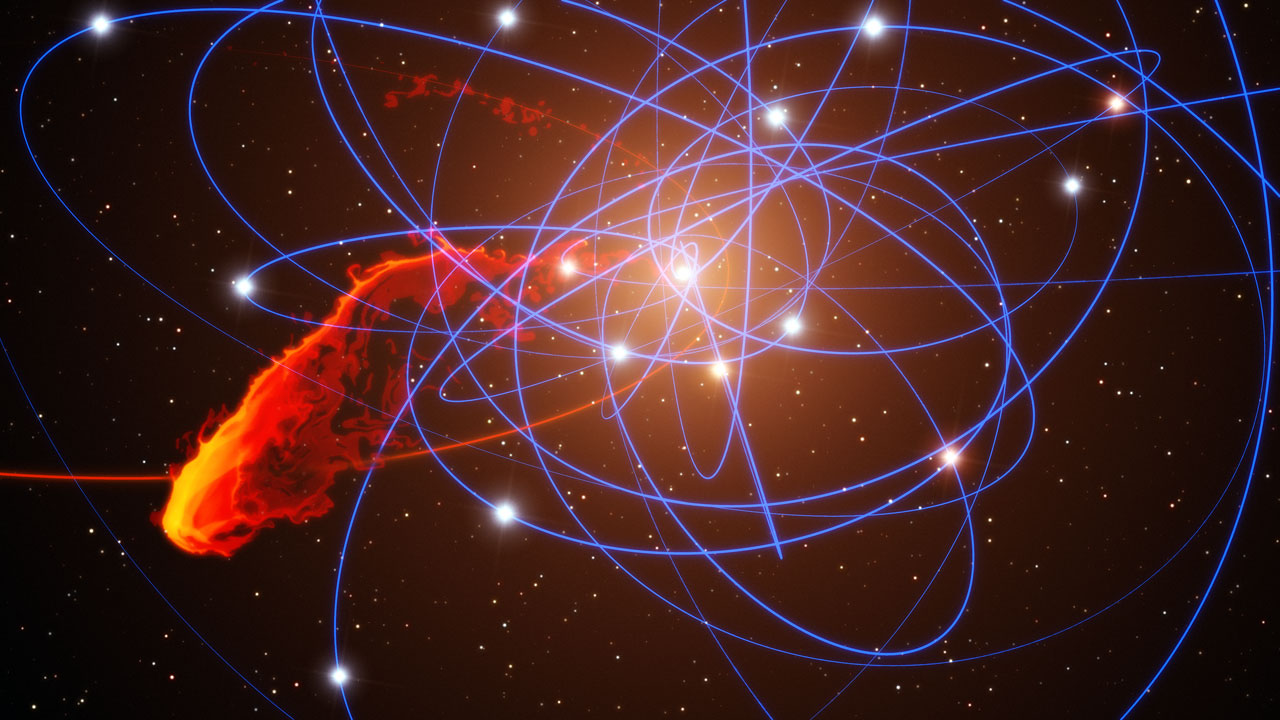
A computer simulation shows the G2 gas cloud's encounter with the supermassive black hole Sagittarius A*
at the center of the Milky Way, as well as the paths of the many other objects that orbit the black hole.
Credit: SO/MPE/Marc Schartmann 3
EUROPEAN SOUTHERN OBSERVATORY PRESS RELEASE
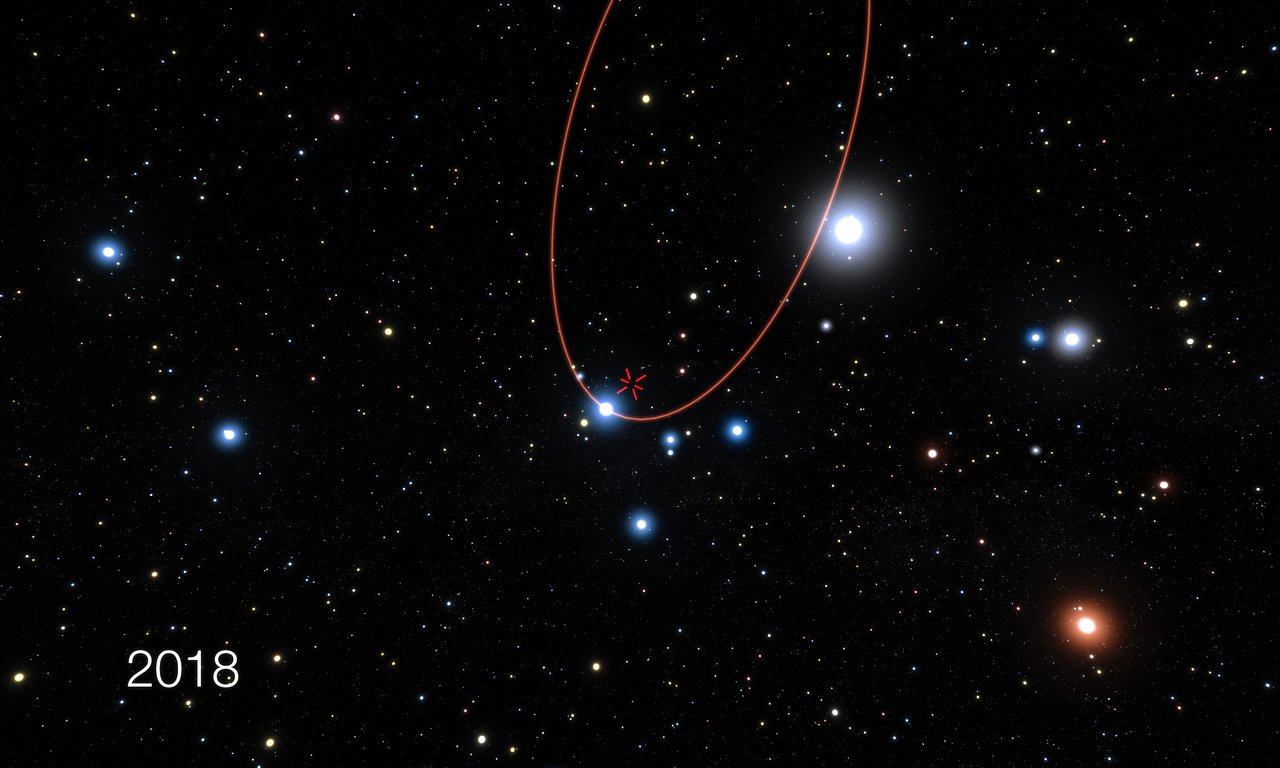
This artist’s impression shows stars orbiting the supermassive black hole at the centre of the Milky Way.
In 2018 one of these stars, S2, will pass very close to the black hole and this event will be the best opportunity
to study the effects of very strong gravity and test the predictions of Einstein’s general relativity in the near future.
The GRAVITY instrument on the ESO Very Large Telescope Interferometer is the most powerful tool for measuring the positions
of these stars in existence and it was successfully tested on the S2 star in the summer of 2016.
The orbit of S2 is shown in red and the position of the central black hole is marked with a red cross.
Illustration credit: ESO/L. Calçada.

Artist's impression of the orbits of three of the stars very close to the supermassive black hole at the center of the Milky Way. Credit: ESO/M. Parsa/L. Calçada
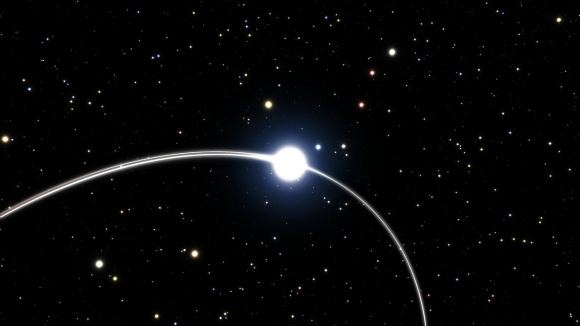
Artist’s impression of part of S2s orbit around the supermassive black hole at the center of the Milky Way. Credit: ESO/M. Parsa/L. Calçada
Uploaded on Aug 2, 2017 This artist's impression video shows the orbits of three of the stars very close to the supermassive black hole at the centre of the Milky Way. Analysis of data from ESO’s Very Large Telescope and other telescopes suggests that the orbits of these stars show the subtle effects predicted by Einstein’s general theory of relativity. There are hints that the orbit of the star called S2 is deviating slightly from the path calculated using classical physics. The end of this sequence highlights the tiny change in the orbit due to the relativistic effects. The position of the black hole is marked with a red cross. More information and download options: Credit: ESO/M. Parsa/L. Calçada Category Science & Technology License Creative Commons Attribution license (reuse allowed)
Published on Aug 10, 2017 A new analysis of data from ESO’s Very Large Telescope and other telescopes suggests that the orbits of stars around the supermassive black hole at the centre of the Milky Way show the subtle effects predicted by Einstein’s general theory of relativity. There are hints that the orbit of the star S2 is deviating slightly from the path calculated using classical physics. This tantalising result is a prelude to much more precise measurements and tests of relativity that will be made using the GRAVITY instrument as star S2 passes very close to the black hole in 2018. This short video shows what this result means and why it is important. The video is available in 4K UHD. The ESOcast Light is a series of short videos bringing you the wonders of the Universe in bite-sized pieces. The ESOcast Light episodes will not be replacing the standard, longer ESOcasts, but complement them with current astronomy news and images in ESO press releases. More information and download options Subscribe to ESOcast in iTunes! Receive future episodes on YouTube by pressing the Subscribe button above or follow us on Vimeo: Watch more ESOcast episodes: Find out how to view and contribute subtitles for the ESOcast in multiple languages, :or translate this video on YouTube Credit: European Space Agency Directed by: Nico Bartmann. Editing: Nico Bartmann. Web and technical support: Mathias André and Raquel Yumi Shida. Written by: Izumi Hansen and Richard Hook. Music: Music written and performed by STAN DART Footage and photos: ESO, N. Risinger (skysurvey.org), Digitized Sky Survey 2, M. Parsa, L. Calçada and MPE. Executive producer: Lars Lindberg Christensen. Caption author (Korean) Starlight Moonlight Yu Category Science & Technology License Standard YouTube License

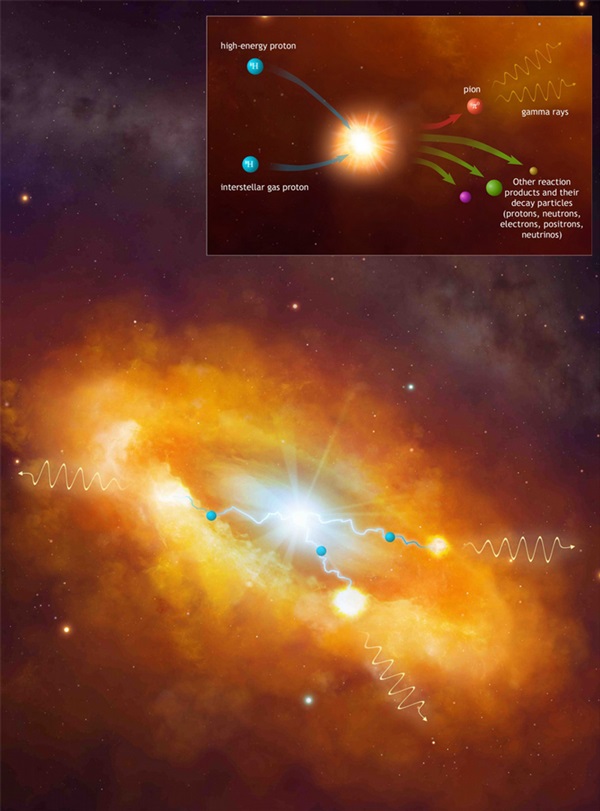
In yet another discovery emanating from detailed analysis of the latest data from the
High Energy Stereoscopic System (H.E.S.S.) observatory in Namibia, an international team of scientists,
including astrophysicists from the University of the Witwatersrand in Johannesburg, announced they have found
the most powerful source of cosmic radiation at the center of our galaxy.
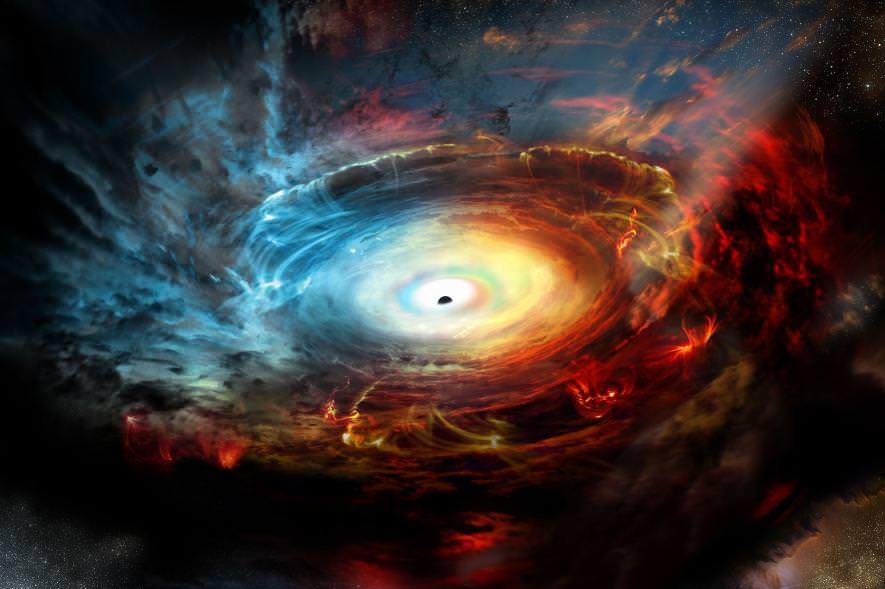
Illustration of the supermassive black hole at the center of the Milky Way. Credit: NRAO/AUI/NSF
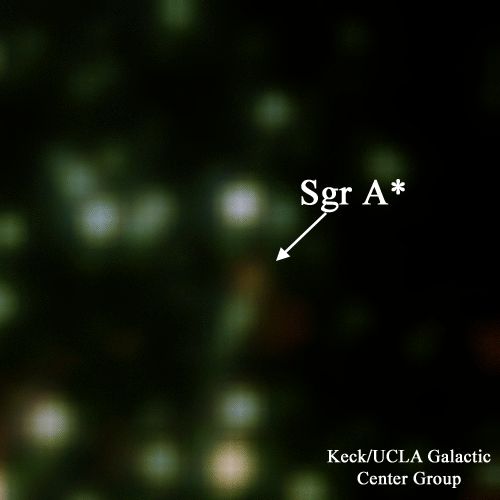

Four images from the paper. Over about a 2 hour period, Sgr A* flared to 75 times normal, and twice as bright as any other observed peak. At first, astronomers thought they were looking at the S star SO-2. Image Credit: Do et al; 2019.

This is our best-yet image of an actual black hole. It’s the super-massive black hole at the center of galaxy M87, and it was captured by the Event Horizon Telescope (EHT). The black hole itself can’t actually be seen so this image is actually of its event horizon. The EHT’s next target is Sgr. A*. Credit: Event Horizon Telescope Collaboration

The group of stars that orbit close to Sgr. A* are called S stars. SO-2 made it’s closest approach about a year before the flaring observed in May 2019. Image Credit: By Cmglee – Own work, CC BY-SA 3.0,
This simulation shows a gas cloud, discovered in 2011, as it passes close to the supermassive black hole at the centre of the galaxy. Observations with ESO's Very Large Telescope in 2013 show that the cloud is so stretched that the front part of it has passed the closest point and is travelling away from the black hole at more than 10 million km/h, whilst the tail is still falling towards it. More information and download options:
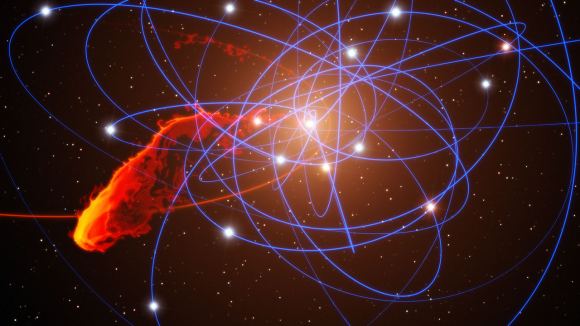
A computer-simulated image of the hydrogen gas cloud G2 encountering Sgr. A* and being stretched out. The encounter could have disrupted the usually sedate in-flow of material into the black hole and caused the variability and flaring observed in May, 2019. Image Credit: M. Schartmann and L. Calcada/ European Southern Observatory and Max-Planck-Institut fur Extraterrestrische Physik.
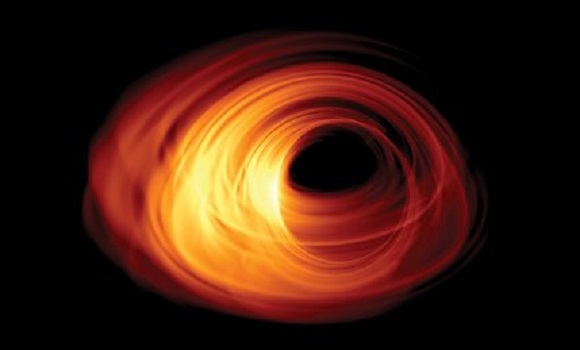
Simulated view of a black hole. Credit: Bronzwaer/Davelaar/Moscibrodzka/Falcke/Radboud University
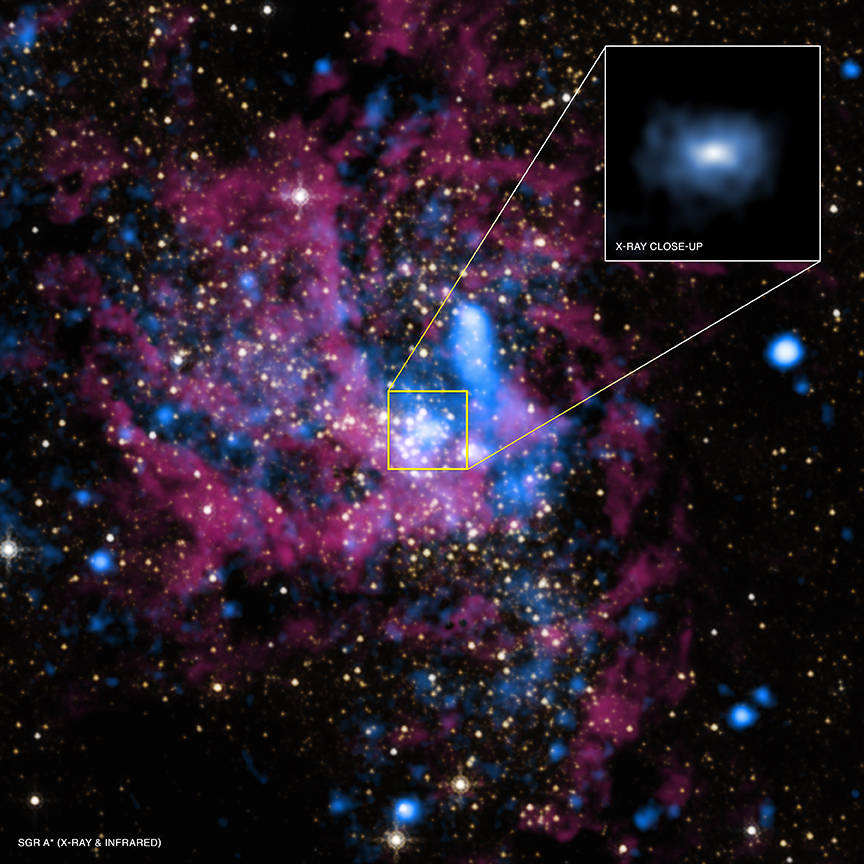
Combined image of Sagittarius A shown in x-ray (blue) and infrared (red), provided by the Chandra Observatory and the Hubble Space Telescope. Credit: X-ray: NASA/UMass/D.Wang et al., IR: NASA/STScI

This artist's impression shows a star crossing the event horizon of a supermassive black hole located in the center of a galaxy. The black hole is so large and massive that tidal effects on the star are negligible, and the star is swallowed whole. Image: Mark A. Garlick/CfA
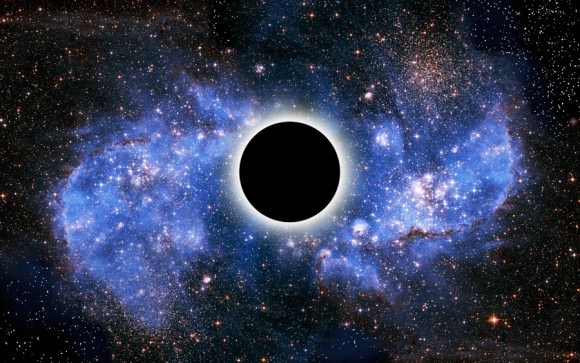
This artist's impression shows a star crossing the event horizon of a supermassive black hole located in the center of a galaxy. The black hole is so large and massive that tidal effects on the star are negligible, and the star is swallowed whole. Image: Mark A. Garlick/CfA
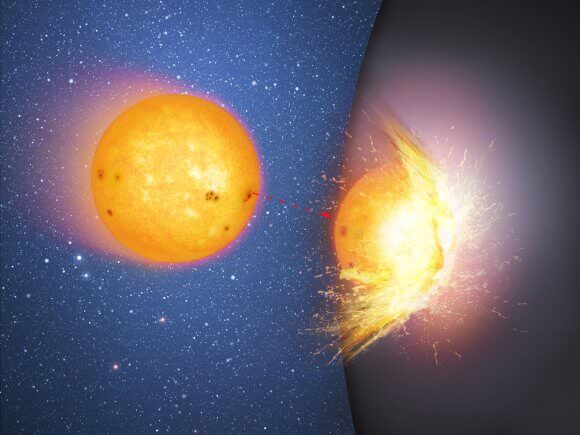
This is the first in a sequence of two artist’s impressions that shows a huge, massive sphere in the center of a galaxy, rather than a supermassive black hole. Here a star moves towards and then smashes into the hard surface of the sphere, flinging out debris. The impact heats up the site of the collision. Image:Mark A. Garlick/CfA

In this second artist’s impression a huge sphere in the center of a galaxy is shown after a star has collided with it. Enormous amounts of heat and a dramatic increase in the brightness of the sphere are generated by this event. The lack of observation of such flares from the center of galaxies means that this hypothetical scenario is almost completely ruled out. Image: Mark A. Garlick/CfA
Published on Oct 20, 2014 If you could see a black hole with your own eyeballs, what would you see? More stories at: Follow us on Twitter: @universetoday Follow us on Tumblr: Like us on Facebook: Google+ - Instagram - Team: Fraser Cain - @fcain Jason Harmer - @jasoncharmer Susie Murph - @susiemmurph Brian Koberlein - @briankoberlein Chad Weber - weber.chad@gmail.com Kevin Gill - @kevinmgill Created by: Fraser Cain and Jason Harmer Edited by: Chad Weber Music: Left Spine Down - “X-Ray” https://www.youtube.com/watch?v=KzWwJ...
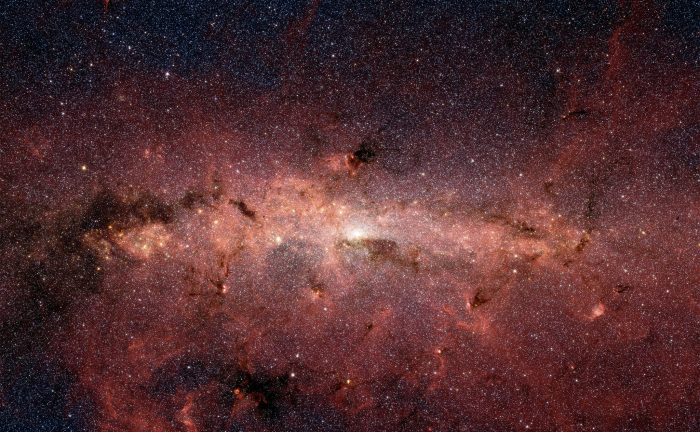
NASA's Spitzer Space Telescope captured this stunning infrared image of the center of the Milky Way Galaxy, where the black hole Sagitarrius A resides. Credit: NASA/JPL-Caltech
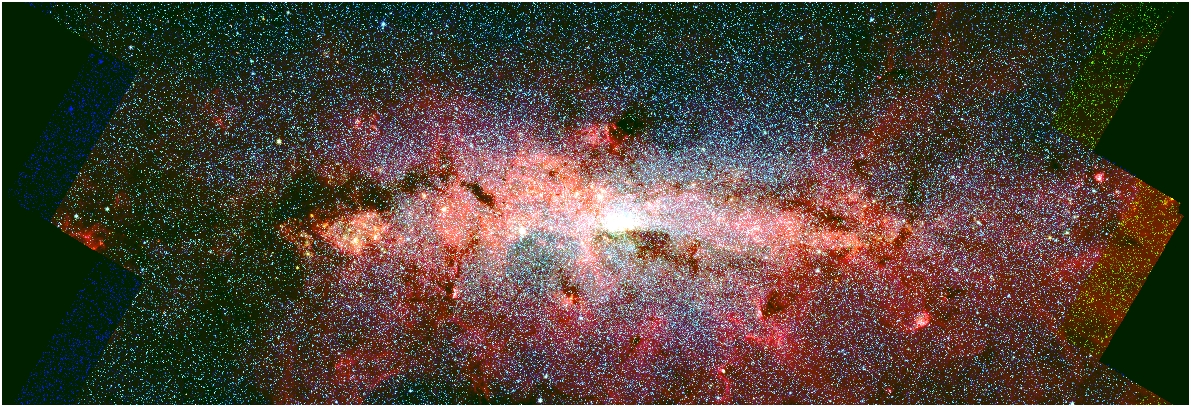
A false color Spitzer infrared image of the Milky Way’s Central Molecular Zone (CMZ). Credit: Spitzer/NASA/CfA
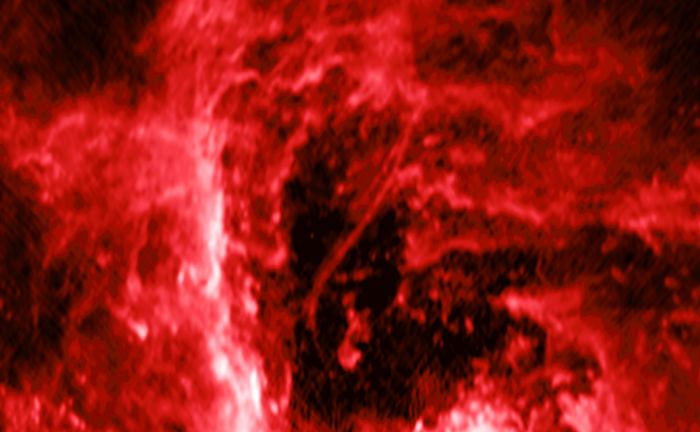
A radio image from the NSF’s Karl G. Jansky Very Large Array showing the center of our galaxy. The mysterious radio filament is the curved line located near the center of the image, & the supermassive black hole Sagittarius A* (Sgr A*), is shown by the bright source near the bottom of the image. Credit: NSF/VLA/UCLA/M. Morris et al.
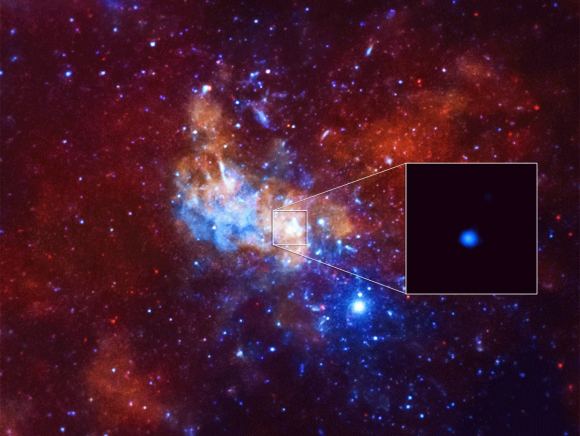
Detection of an unusually bright X-Ray flare from Sagittarius A*, a supermassive black hole in the center of the Milky Way galaxy. Credit: NASA/CXC/Stanford/I. Zhuravleva et al.
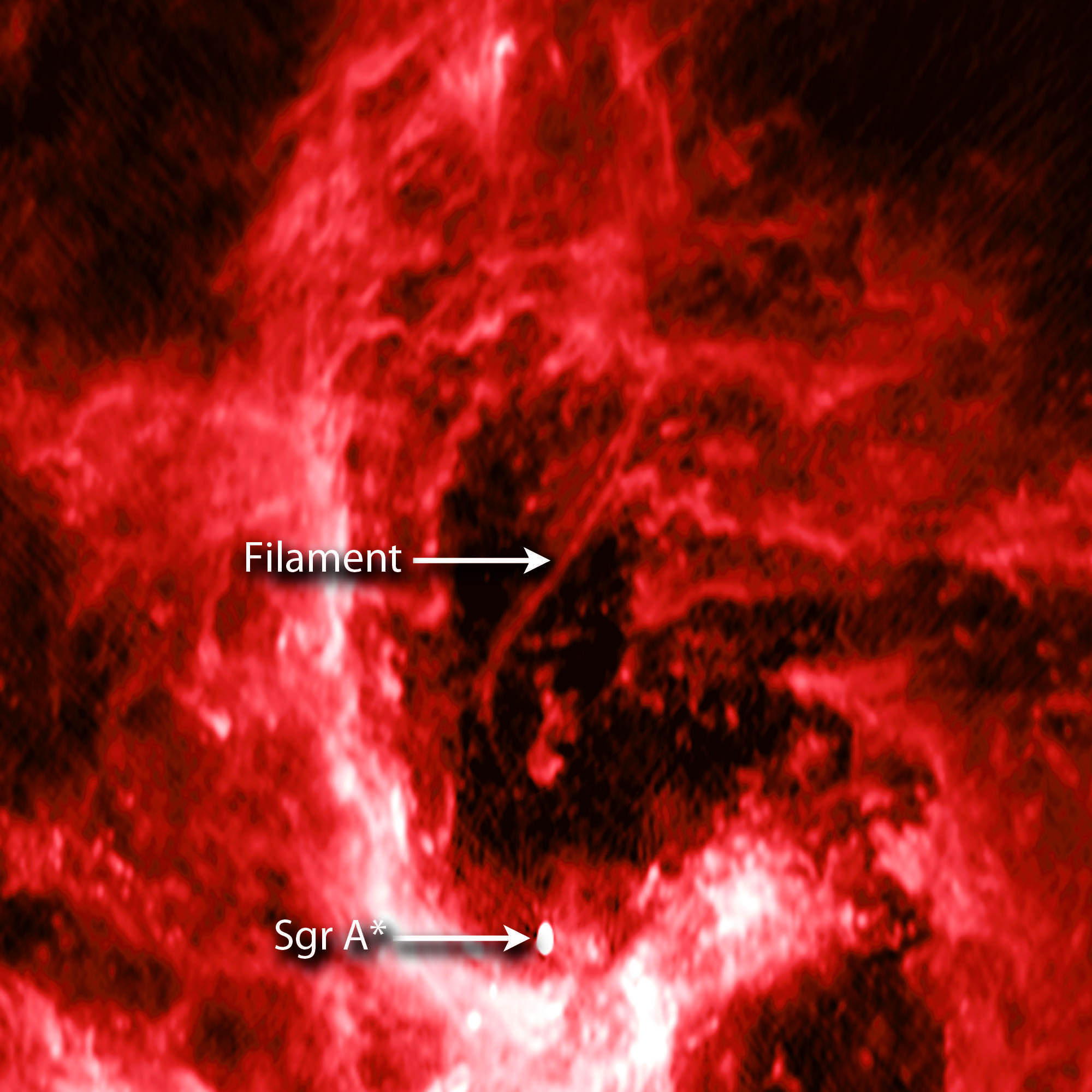
Labelled image of the center of our galaxy, showing the mysterious radio filament & the supermassive black hole Sagittarius A* (Sgr A*). Credit: NSF/VLA/UCLA/M. Morris et al.
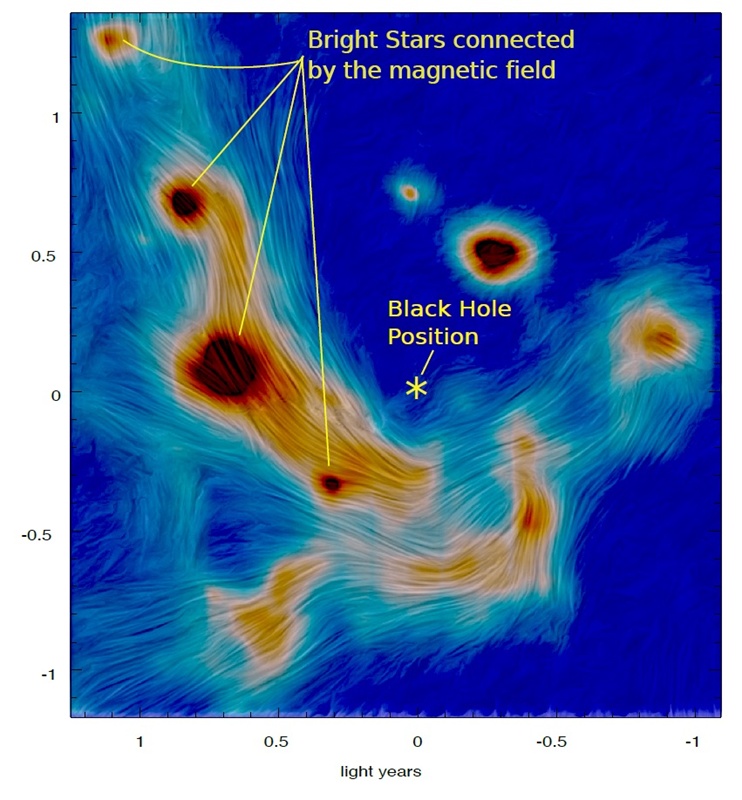
Astronomers have produced the first high-resolution map tracing the magnetic field lines around the Milky Way’s supermassive black hole.
This new high-resolution map shows the magnetic field lines embedded in gas and dust around the supermassive black hole (Sagittarius A*) residing in the core of the Milky Way. Red areas show regions where warm dust particles and stars are emitting lots of infrared radiation (heat), while dark blue areas show cooler regions that lack pronounced warm and dusty filaments. E. Lopez-Rodriguez/NASA Ames/University of Texas at San Antonio
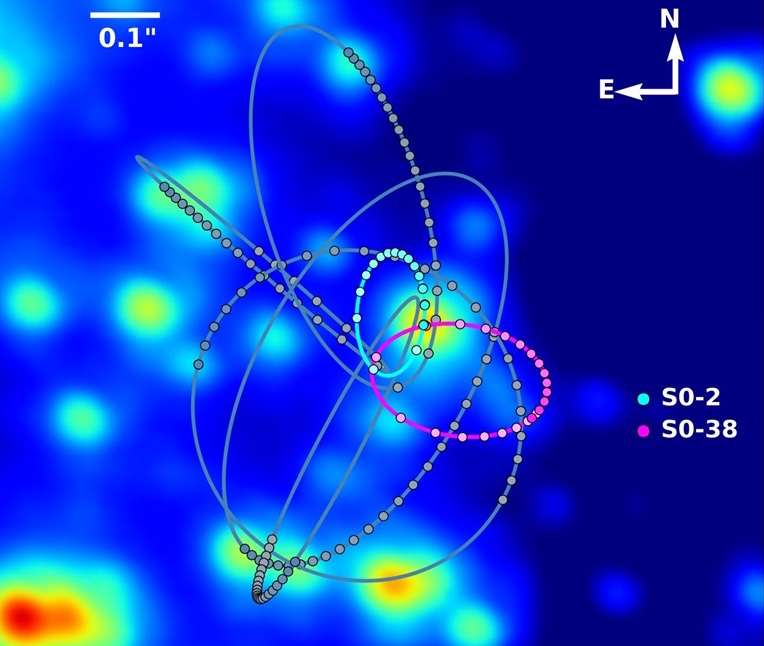
Astronomers determined the star S0-2, which will test Einstein’s Theory of General Relatively when it swings by our galaxy’s supermassive black hole later this year, does not have a significant binary companion. By Jake Parks | Published: Wednesday, February 28, 2018
S0-2 is one of only a handful of stars that orbit very close to the Milky Way’s supermassive black hole. Later this year, astronomers will eagerly observe S0-2 as it makes its closest pass by the black hole, which will provide a stringent test of Einstein’s Theory of General Relativity. S. Sakai/A. Ghez/W. M. Keck Observatory/UCLA Galactic Center Group
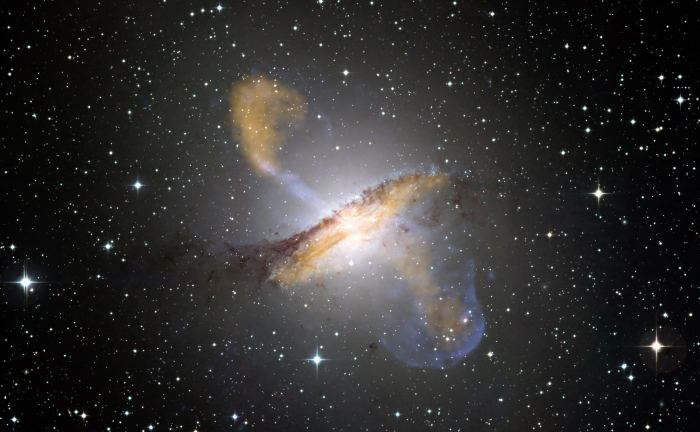
Colour composite image of Centaurus A, revealing the lobes and jets emanating from the active galaxy’s central black hole. Credit: ESO/NASA/CXC/CfA/WFI/MPIfR/APEX/A.Weiss et al./R.Kraft et al.

The primary mirror of the Hobby-Eberly Telescope (HET) at McDonald Observatory. The mirror is made up of 91 segments, and has an effective aperture of 9.2 meters. Credit: Marty Harris/McDonald Observatory
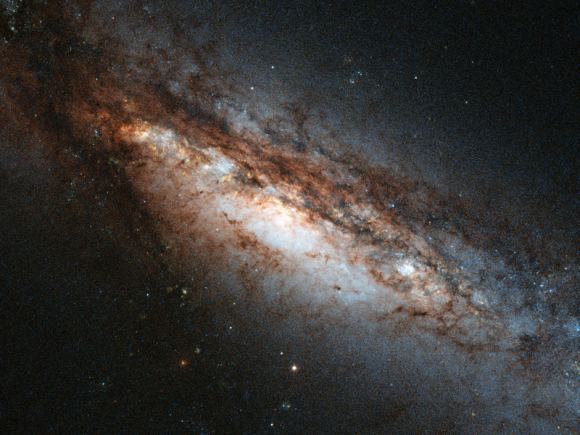
The galaxy NGC 660 – in this and other galaxies, the rate at which new stars are formed appears to be linked to the evolution of the galaxy’s central black hole. Credit: ESA/Hubble/NASA
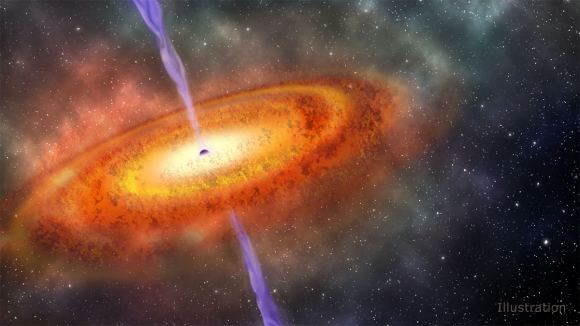
Artist’s concept of the most distant supermassive black hole ever discovered. It is part of a quasar from just 690 million years after the Big Bang. Credit: Robin Dienel/Carnegie Institution for Science
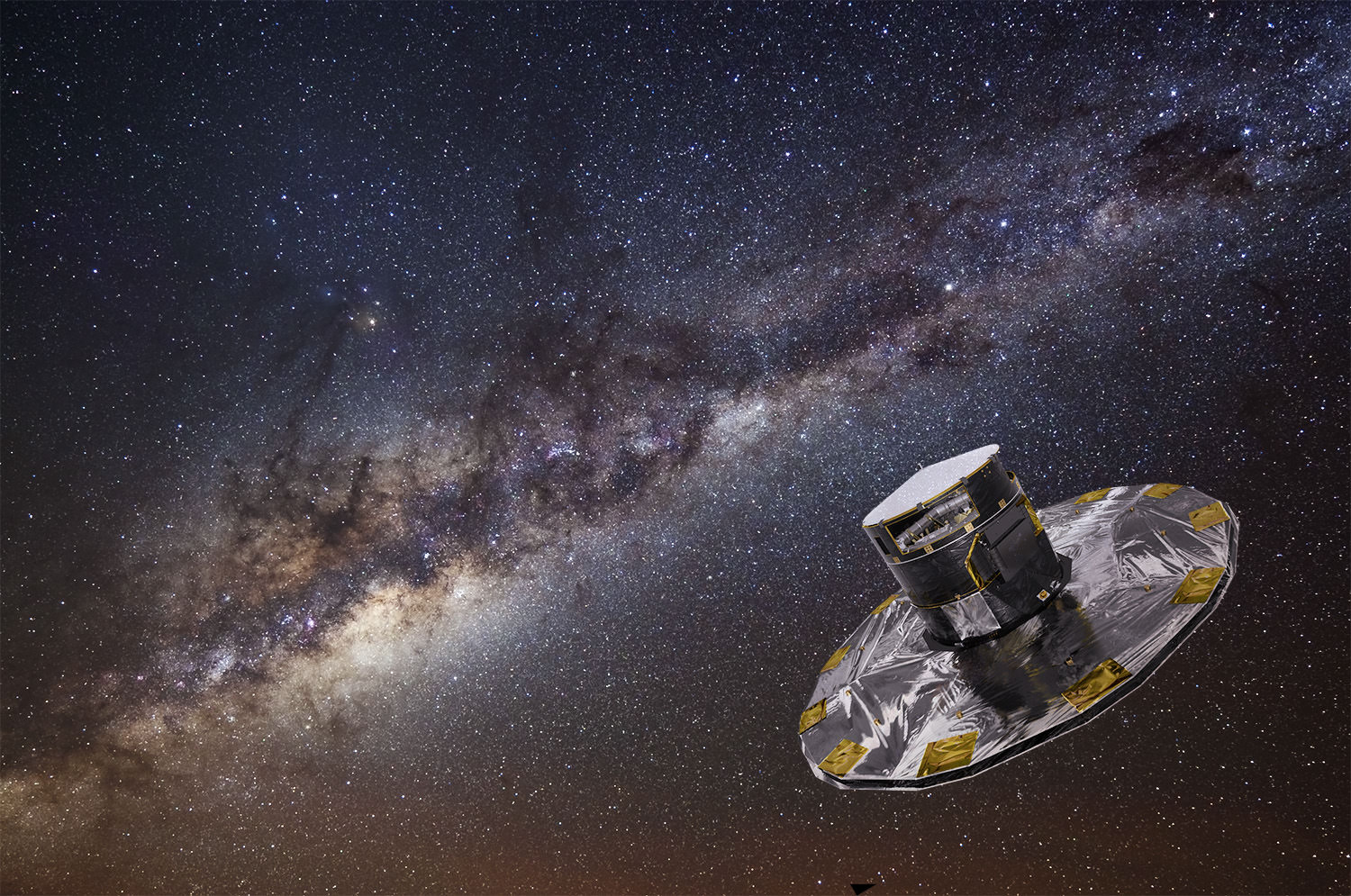
The ESA's Gaia mission is currently on a five-year mission to map the stars of the Milky Way. Image credit: ESA/ATG medialab; background: ESO/S. Brunier.
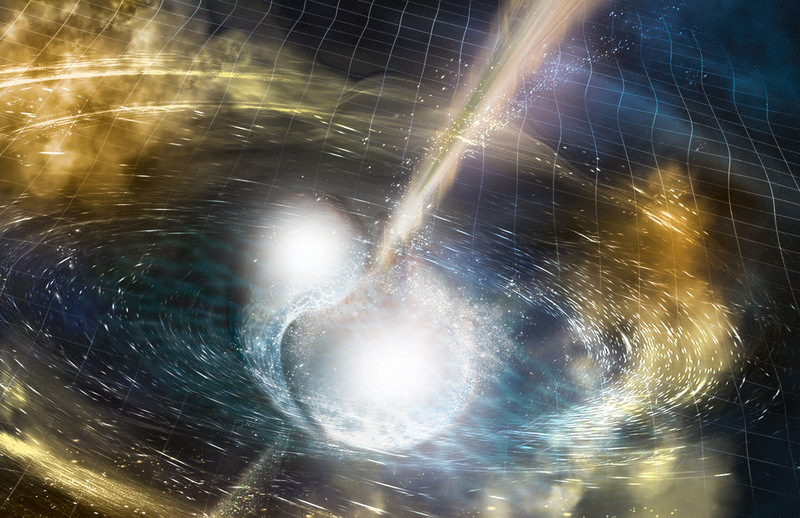
Artist’s illustration of two merging neutron stars, which are a source of gravitational waves. Credit: National Science Foundation/LIGO/Sonoma State University/A. Simonnet
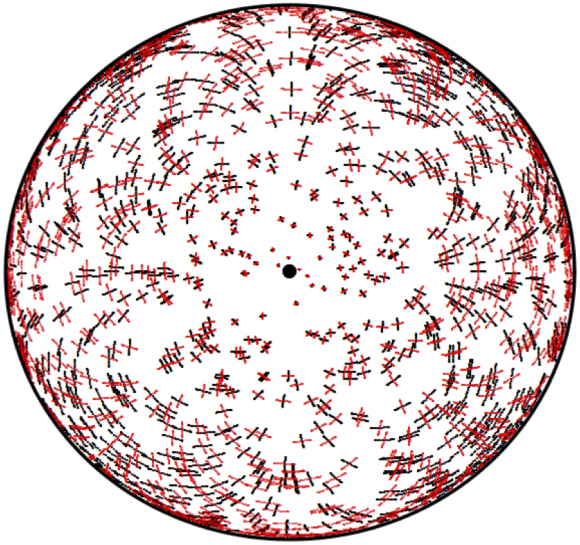
Figure showing a Gaia star field, with red and black lines indicating induced apparent motions of the stars within a hemisphere. Credit: Kavli Institute for Cosmology, Cambridge

Artist’s impression of two merging black holes, which has been theorized to be a source of gravitational waves. Credit: Bohn, Throwe, Hébert, Henriksson, Bunandar, Taylor, Scheel/SXS
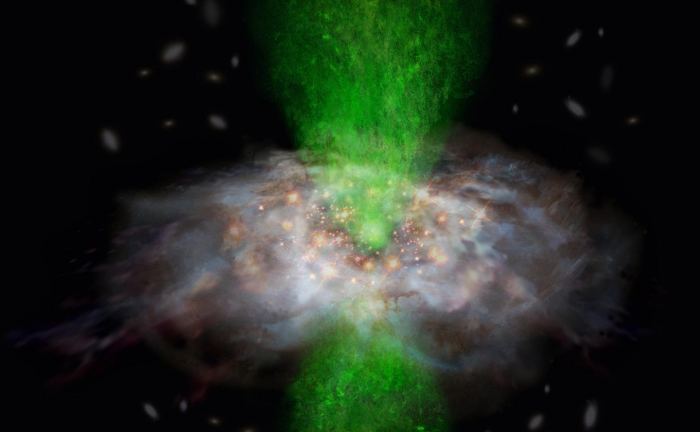
Artist's impression of an ionized gas outflow (green) driven by the central supermassive black hole does not affect the star formation of its host galaxy. This situation may occur if the ionized gas is outflowing perpendicularly to the molecular gas. Credit: ALMA (ESO/NAOJ/NRAO)
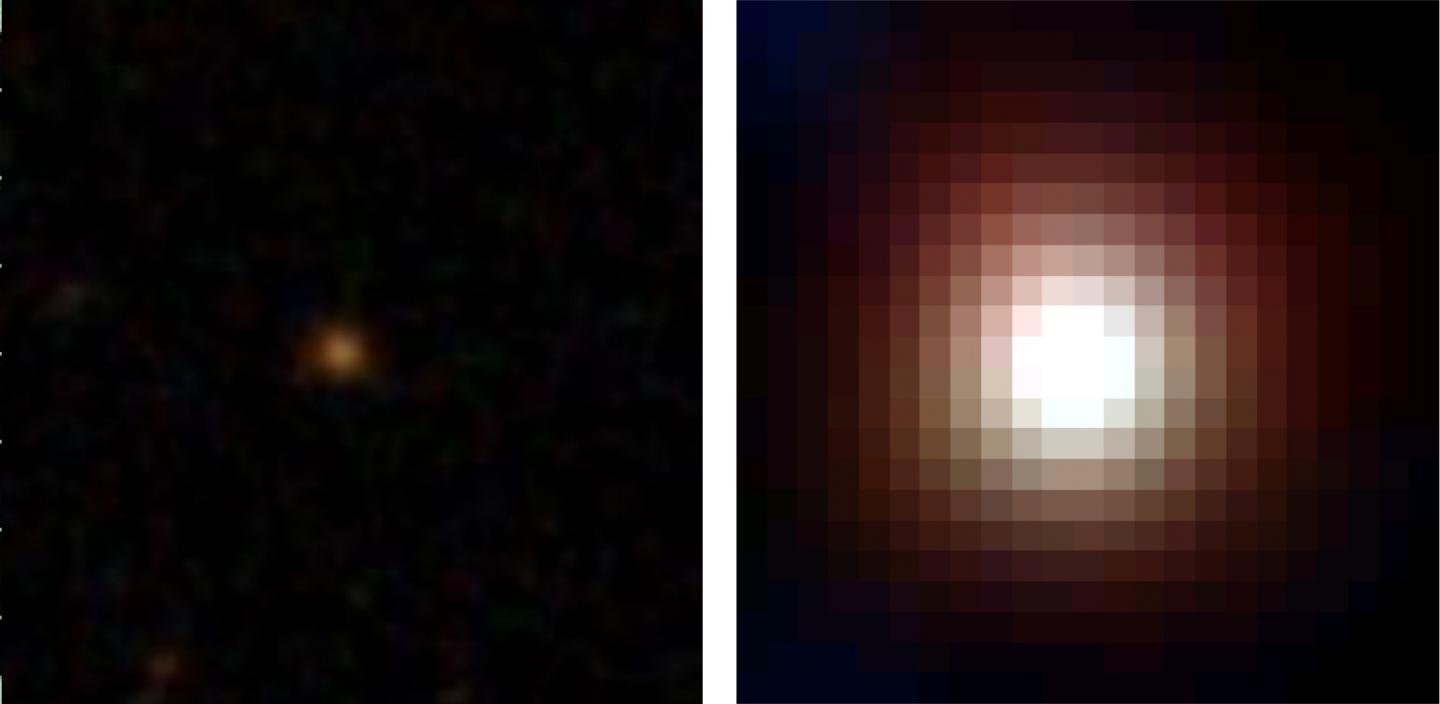
Images from the Sloan Digital Sky Survey (SDSS) (left), and mid-infrared image from WISE (right), respectively. Credit: Sloan Digital Sky Survey/NASA/JPLCaltech
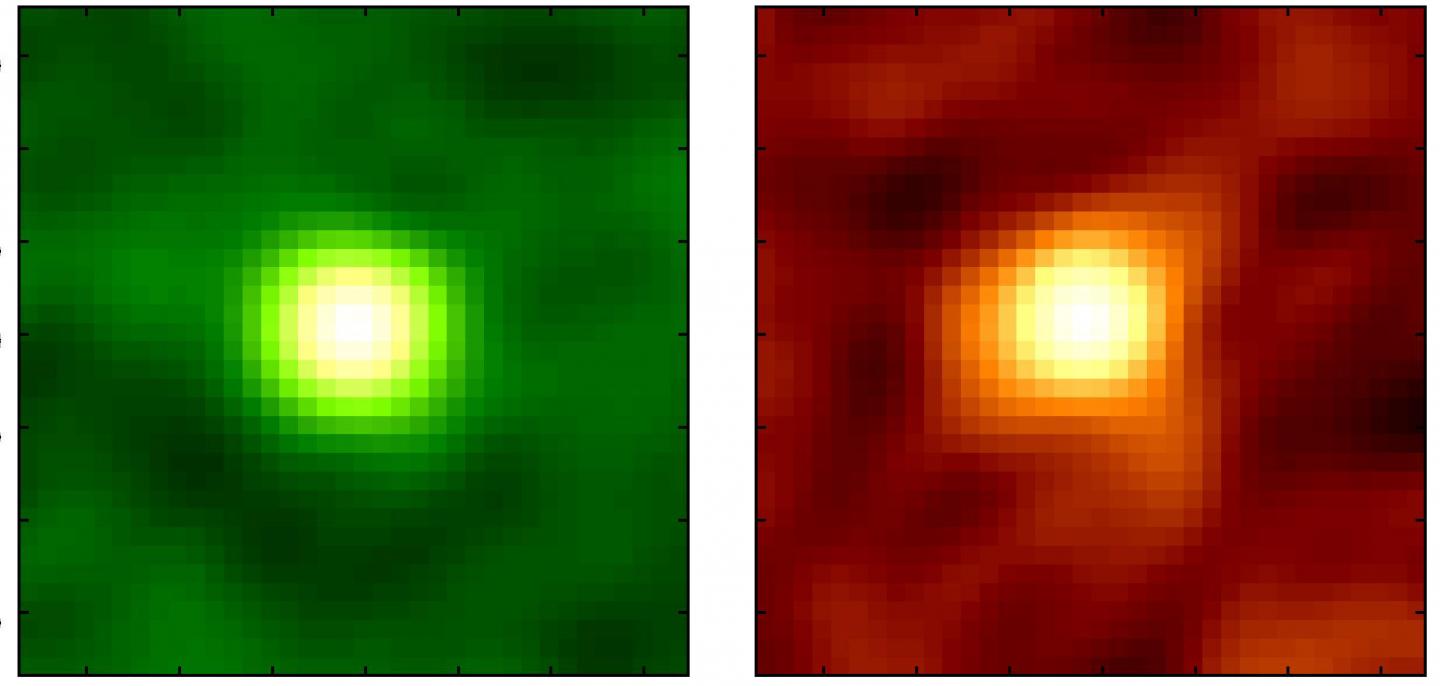
IEmission from Carbon Monoxide (Left) and Cold Dust (Right) in WISE1029 Observed by ALMA (image). Credit: ALMA (ESO/NAOJ/NRAO), Toba et al.
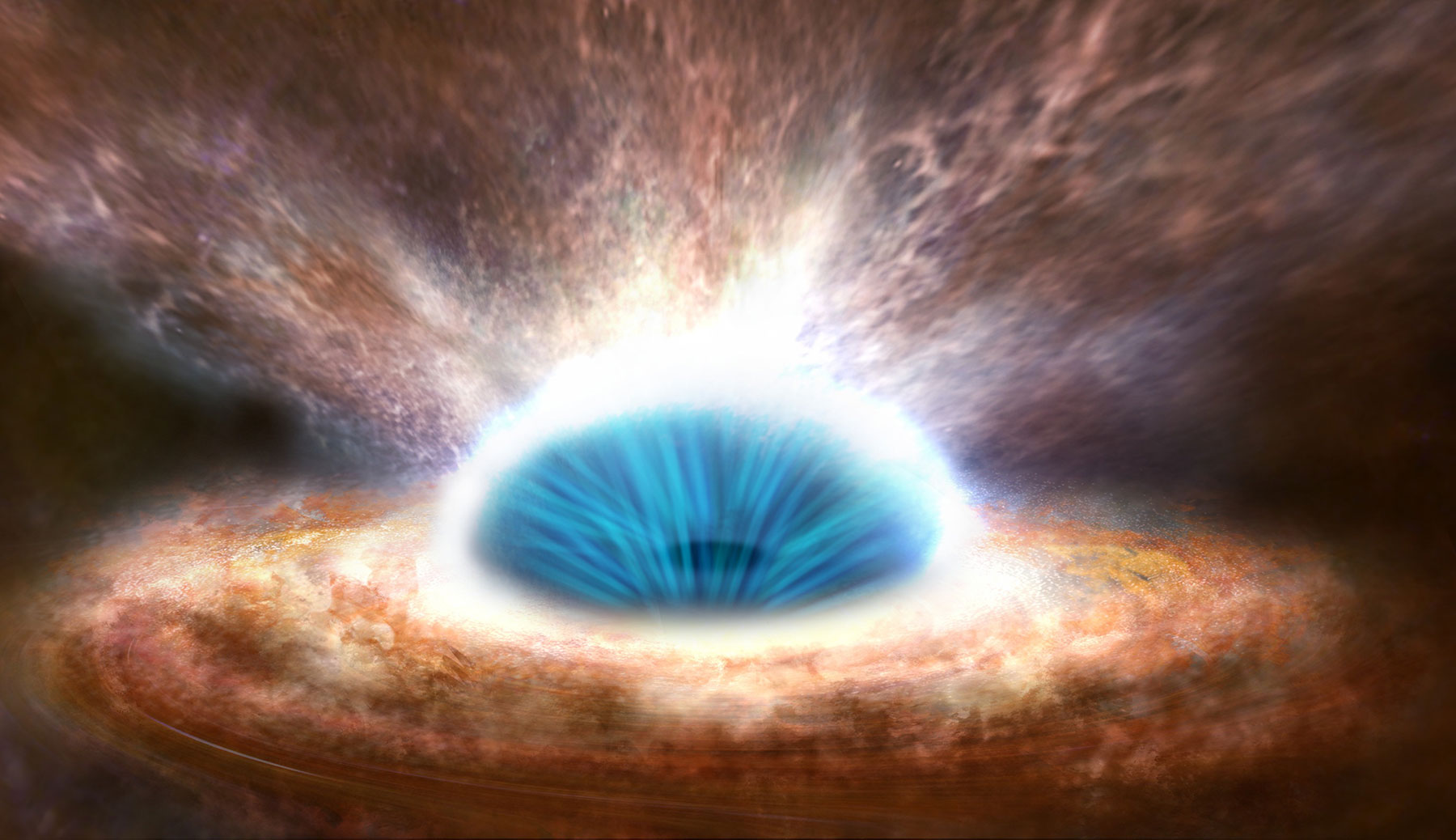
Artist’s impression of the black hole wind at the center of a galaxy. Credit: ESA
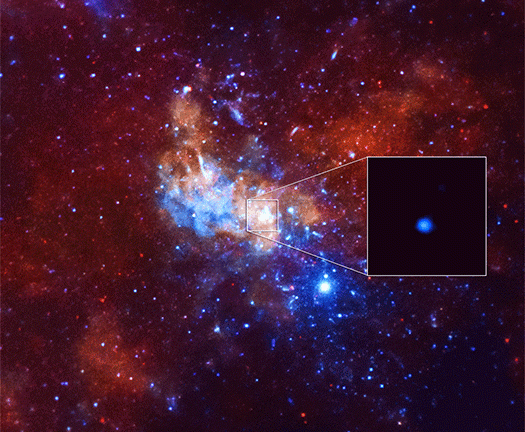
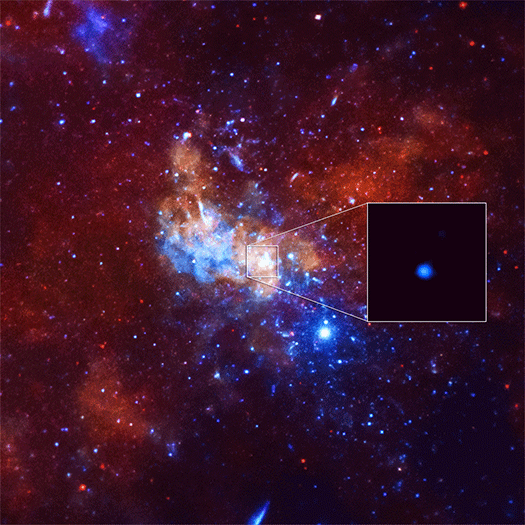
Thanks to the Chandra X-ray Observatory
On September 14th, 2013, astronomers caught the largest X-ray flare ever detected from the supermassive black hole at the center of the Milky Way, known as Sagittarius A* (Sgr A*). Credit: NASA/CXC/Stanford/I. Zhuravleva et al.
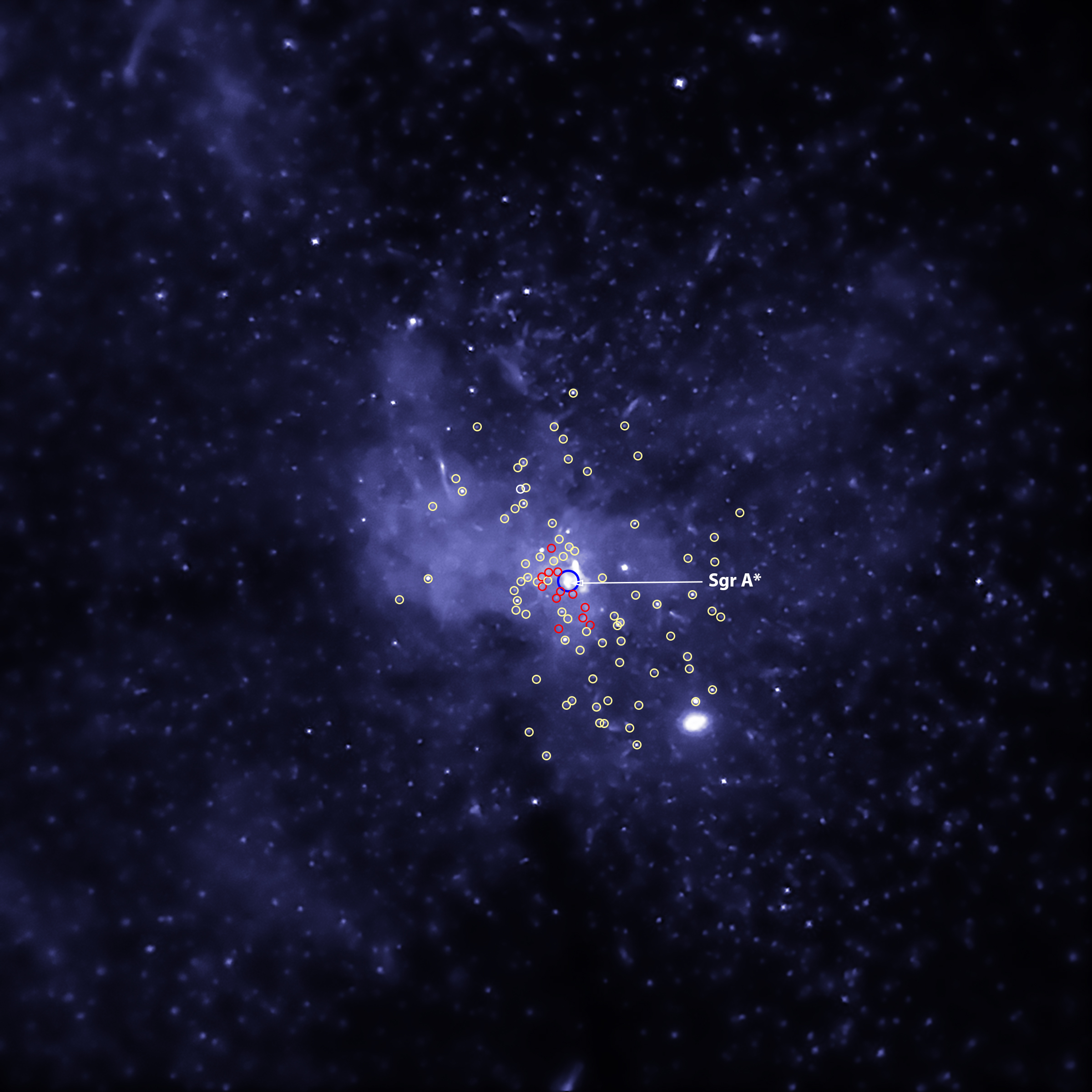
The center of the Milky Way Galaxy, with X-ray binaries circled in red, other X-ray sources circled in yellow, and Sagittarius A* circled in blue at the center. Credit: NASA/CXC/Columbia University/C. Hailey et al.
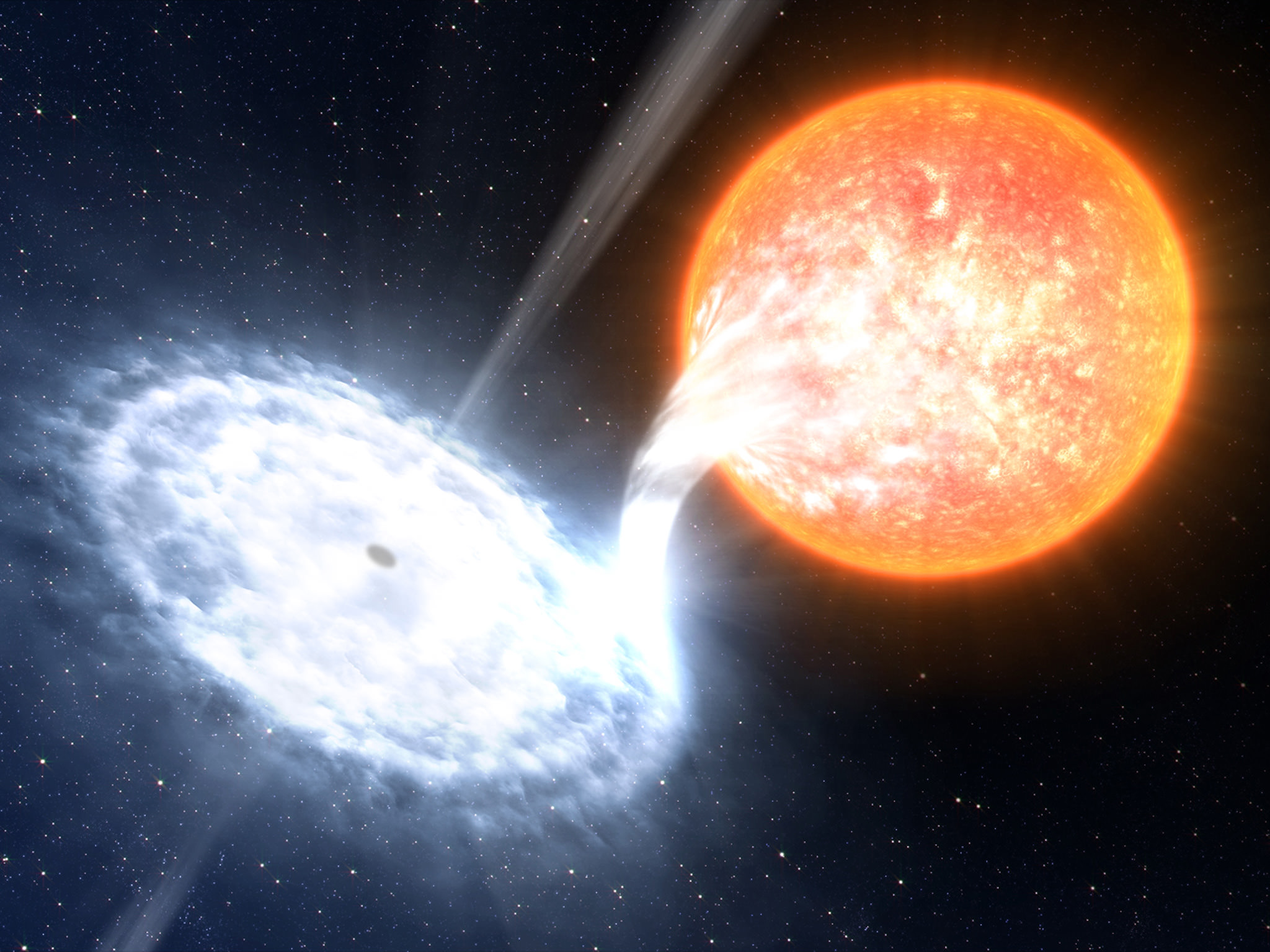
Artist”s impression of a black hole binary, consisting of a black hole siphoning material from its companion. Credit: ESO/L. Calçada
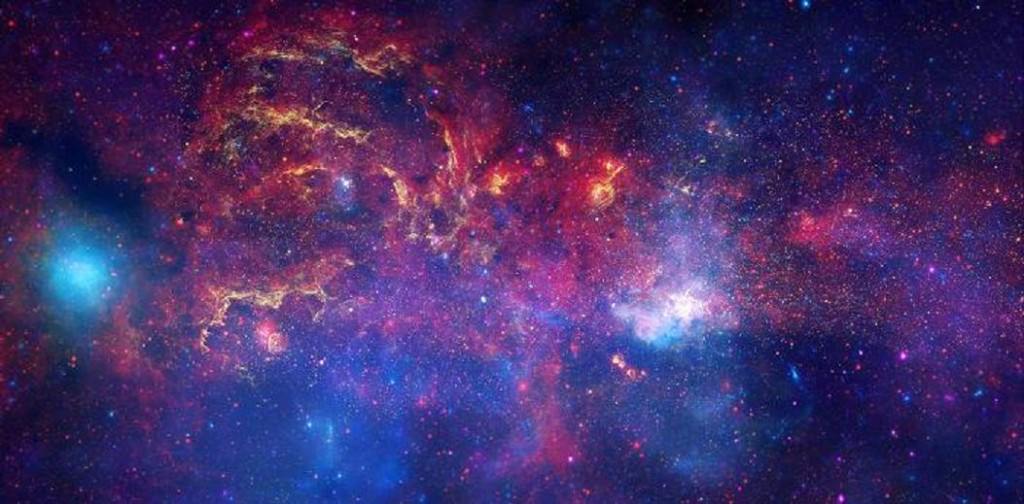
The galactic core, observed using infrared light and X-ray light. Credit: NASA, ESA, SSC, CXC, and STScI
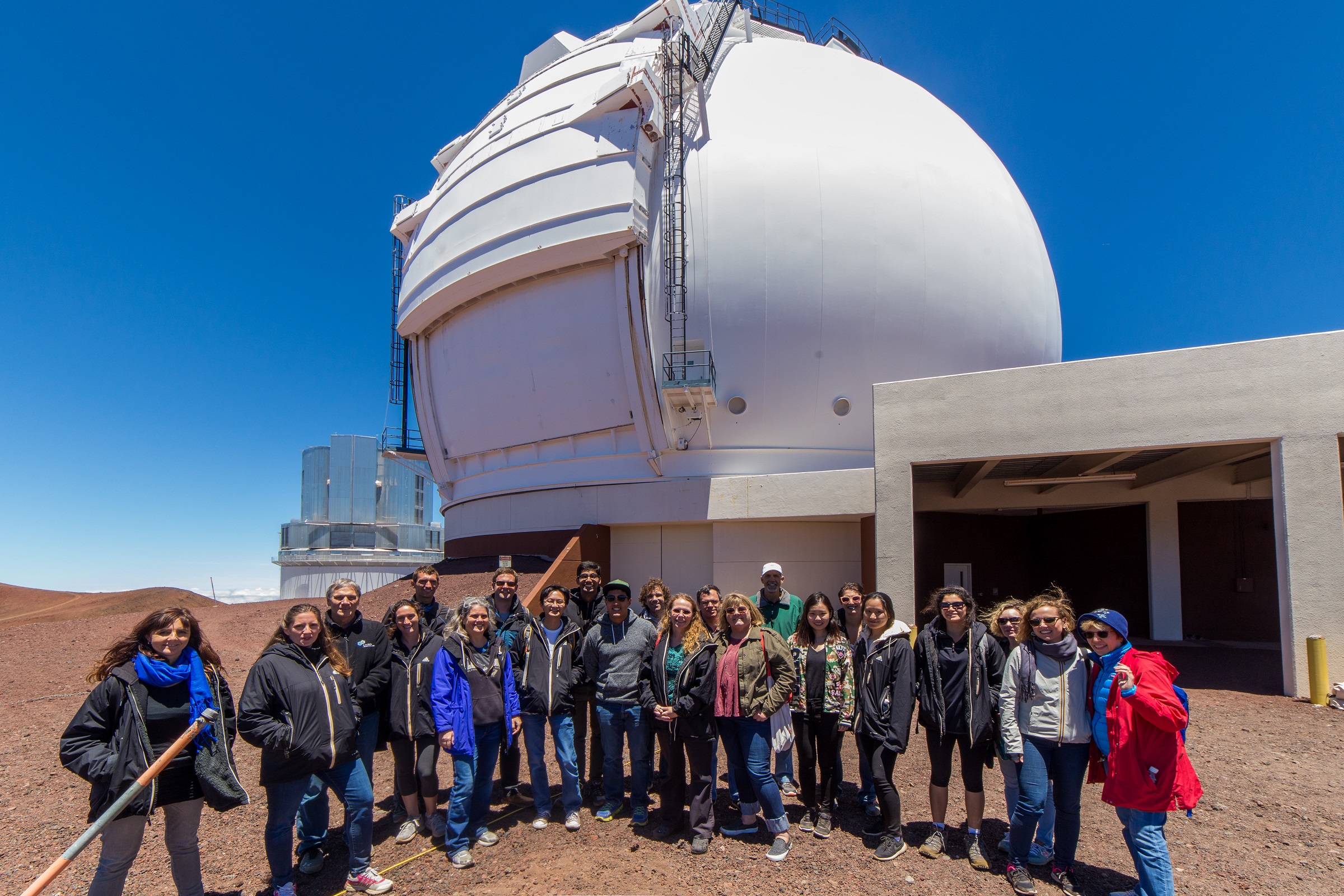
Pictured here are members of GCOI in front of Keck Observatory on Maunakea, Hawaii, during a visit last year. Credit: W.M. Keck Observatory
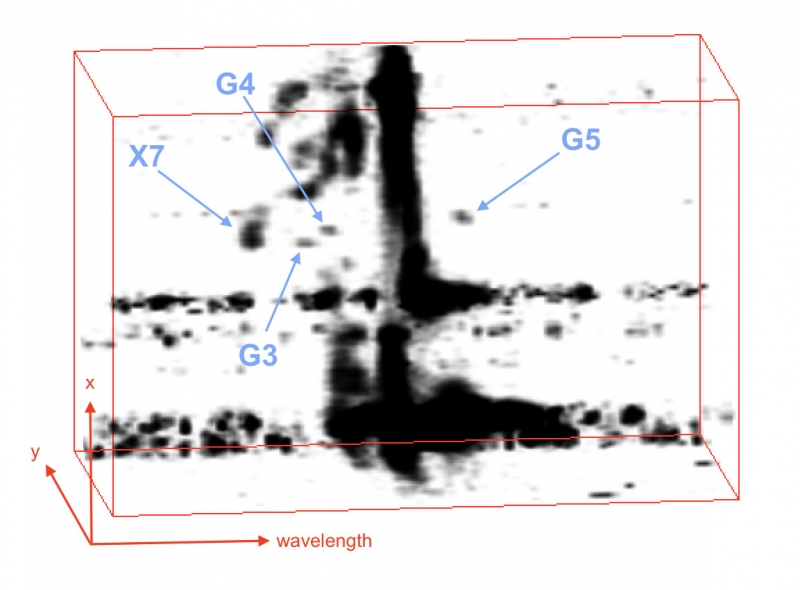
3-D spectro-imaging data cube produced using software called OSIRIS-Volume Display ( OsrsVol) to separate G3, G4, and G5 from the background emission. Credit: W.M. Keck Observatory
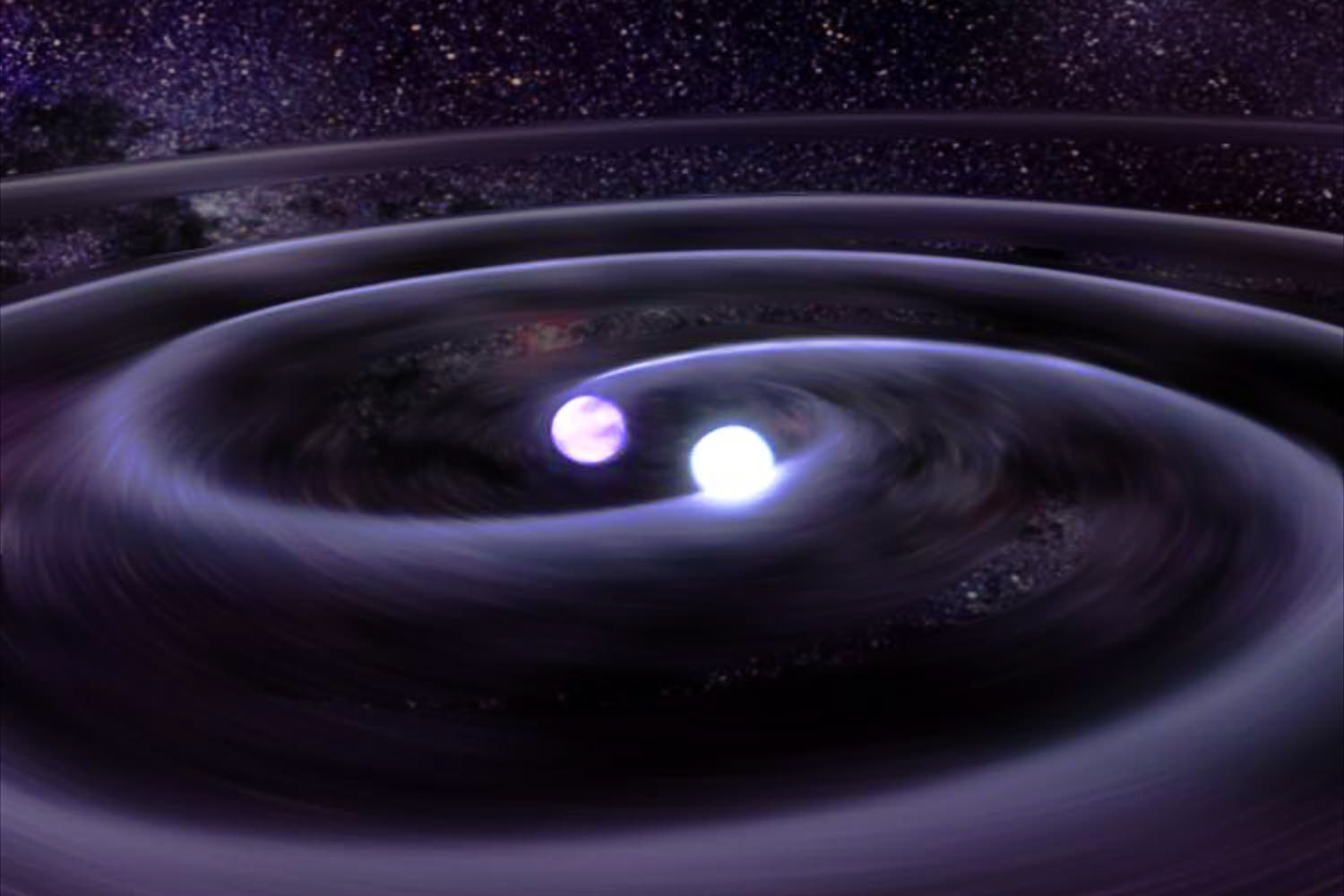
A binary star system potentially on the verge of a stellar collision. Credit: Chandra

Artist rendering of a wormhole connecting two galaxies. Credit: Davide and Paolo Salucci.
Our very own Milky Way could be home to a giant tunnel in spacetime.
At least, that�s what the authors of a new study have proposed. According to the team,
a collaboration between Indian, Italian, and North American researchers at the
International School for Advanced Studies (SISSA) in Italy, the central halo of our galaxy
may harbor enough dark matter to support the creation and sustenance of a �stable and navigable�
shortcut to a distant region of spacetime � a phenomenon known as a wormhole
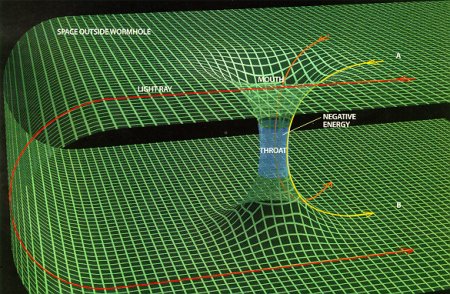
A graphic of the structure of a theorized wormhole (NASA)
But according to the team at SISSA, large amounts of dark matter could provide this fuel.
Using a model of dark matter�s abundance that is based on the rotation curves of other spiral galaxies,
the researchers found that the distribution of dark matter in the Milky Way produced solutions in general relativity that would,
theoretically, allow a stable wormhole to arise.
Published on Jan 21, 2015
The (hypothetical) wormhole proposed by Kuefettig, Salucci et al connecting the center with a very far position
of our Galaxy when one passes through its throat.
Crediti: Davide and Paolo Salucci Category Science & Technology License Standard YouTube License


In the past few decades, astronomers have been able to look farther into the Universe (and also back in time), almost to the very beginnings of the Universe. In so doing, they’ve learned a great deal about some of the earliest galaxies in the Universe and their subsequent evolution. However, there are still some things that are still off-limits, like when galaxies with supermassive black holes (SMBHs) and massive jets first appeared.
We hear that black holes absorb all the light that falls into them. And yet, we hear of black holes shining so brightly we can see them halfway across the Universe. What's going on? Which is it? Support us at:Support us at: Follow us on Tumblr: : More stories at Follow us on Twitter: @universetoday Like us on Facebook: Instagram - Team: Fraser Cain - @fcain / frasercain@gmail.com /Karla Thompson - @karlaii Chad Weber - Chloe Cain - Instagram: @chloegwen2001 Music: Left Spine Down - “X-Ray” I remember back to a classic episode of the Guide to Space, where I provided an extremely fascinating and concise explanation for what a quasar is. Don’t recall that episode? Well, it was super. Just super. Alright slackers, let’s recap.
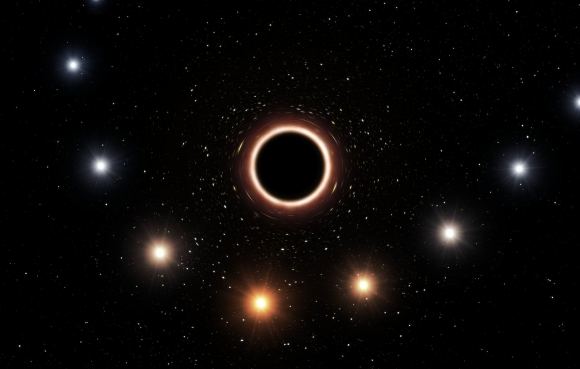
Artist’s impression of the path of the star S2 as it passes very close to the supermassive black hole at the center of the Milky Way. Credit: ESO/M. Kornmesser
This movie shows a simulation of the merger of two black holes and the resulting emission of gravitational radiation. The colored fields represent a component of the curvature of space-time. The outer sheets (red) correspond directly to outgoing gravitational radiation, which was recently detected by the NSF’s LIGO observatories. Credit: NASA/C. Henze
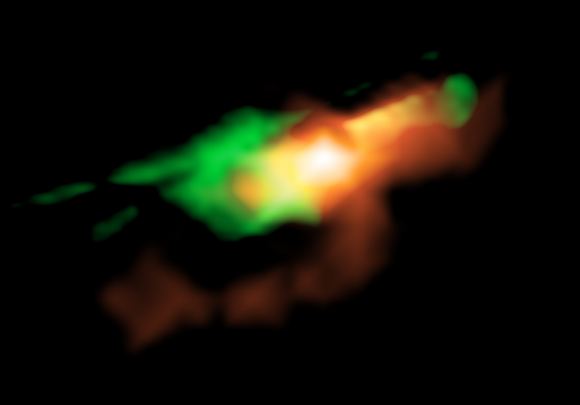
Reconstructed images of MG J0414+0534, showing emissions from dust and ionized gas around a quasar (red) and carbon monoxide gas (green), which have a bipolar structure along the jets. Credit: ALMA (ESO/NAOJ/NRAO), K. T. Inoue et al.
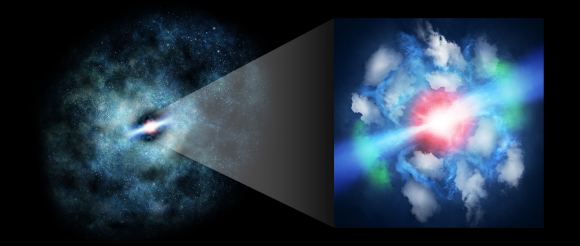
Artist’s impression of MG J0414+0534, showing the powerful jets that disturb the surrounding gas in the host galaxy. Credit: Kindai University From this, the team concluded that they were witnessing a very early phase of jet evolution in the MG J0414+0534 galaxy. If true, these observations allowed the team to witness a key evolutionary process in galaxies during the early Universe. As Inoue summarized:
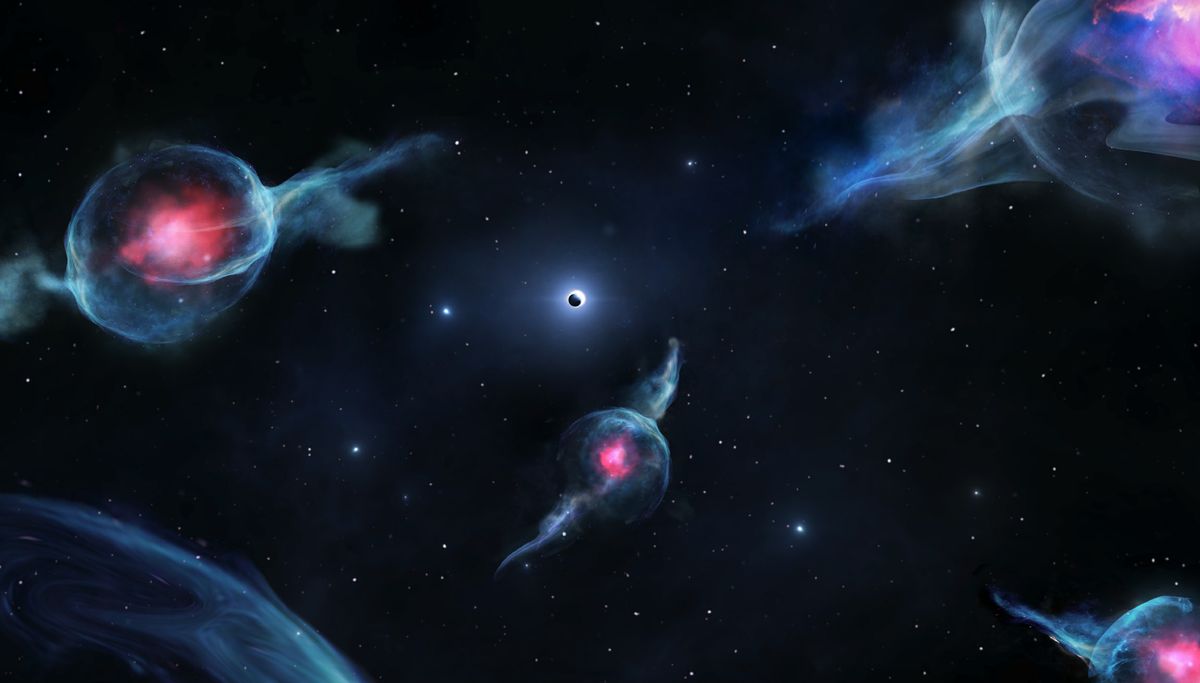
At the center of our galaxy lies a region where roughly 10 million stars are packed into just 1 parsec (3.25 light-years) of space. At the center of this lies the supermassive black hole (SMBH) known as Sagittarius A*, which has a mass of over 4 million Suns. For decades, astronomers have been trying to get a better look at this region in the hopes of understanding the incredible forces at work and how they have affected the evolution of our galaxy. What they’ve found includes a series of stars that orbit very closely to Sagittarius A* (like S1 and S2), which have been used to test Einstein’s Theory of General Relativity. And recently, a team from UCLA’s Galactic Center Orbits Initiative detected a series of compact objects that also orbit the SMBH. These objects look like clouds of gas but behave like stars, depending on how close they are in their orbits to Sagittarius A*.
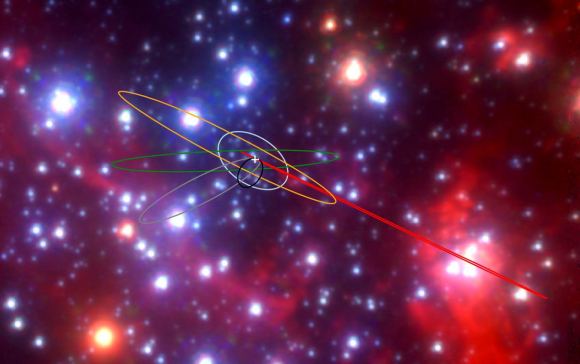
Image showing the orbits of the G objects at the center of our galaxy, with the SMBH indicated with a white cross. Credit: Anna Ciurlo, Tuan Do/UCLA Galactic Center Group
More than 100 years after Albert Einstein published his iconic theory of general relativity, it is beginning to fray at the edges, said Andrea Ghez, UCLA professor of physics and astronomy. Now, in the most comprehensive test of general relativity near the monstrous black hole at the center of our galaxy, Ghez and her research team report July 25 in the journal Science that Einstein’s theory of general relativity holds up. “Einstein’s right, at least for now,” said Ghez, a co-lead author of the research. “We can absolutely rule out Newton’s law of gravity. Our observations are consistent with Einstein’s theory of general relativity. However, his theory is definitely showing vulnerability. It cannot fully explain gravity inside a black hole, and at some point we will need to move beyond Einstein’s theory to a more comprehensive theory of gravity that explains what a black hole is.” Read the full story:
The center of our Galaxy hosts a supermassive black hole of 4 million times the mass of the Sun. A great number of stars spin around it at very high speed. The UCLA Galactic Center Group discovered another class of objects orbiting the black hole: the G objects. These peculiar objects look like gas clouds but behave like stars. G objects are likely stars that are hidden in a thick envelope of gas and dust. They may have formed as the result of the merger of a pair of stars. This animation is a visualization of the orbital motion of G objects and stars in the Galactic Center. The G objects are shown in magenta, young stars in green and old stars in orange. The orbits are based on the Keck data obtained between 1995 and 2019. The research is published in the journal Nature: A blogpost by lead author Anna Ciurlo, a UCLA postdoctoral researcher,is published here: UCLA press release here: To find out more about the Galactic Center: Animation done by: Advanced Visualization Lab, National Center for Supercomputing Applications,University of Illinois
UCLA astronomers caught the enormous black hole at the center of our galaxy dining on a large “feast”. On May 13, 2019, the area just outside the black hole’s point of no return became dramatically brighter, as seen in this short video, provided by UCLA research scientist Tuan Do, from his observations at the at the W.M. Keck Observatory in Hawaii. Read the full story: Category
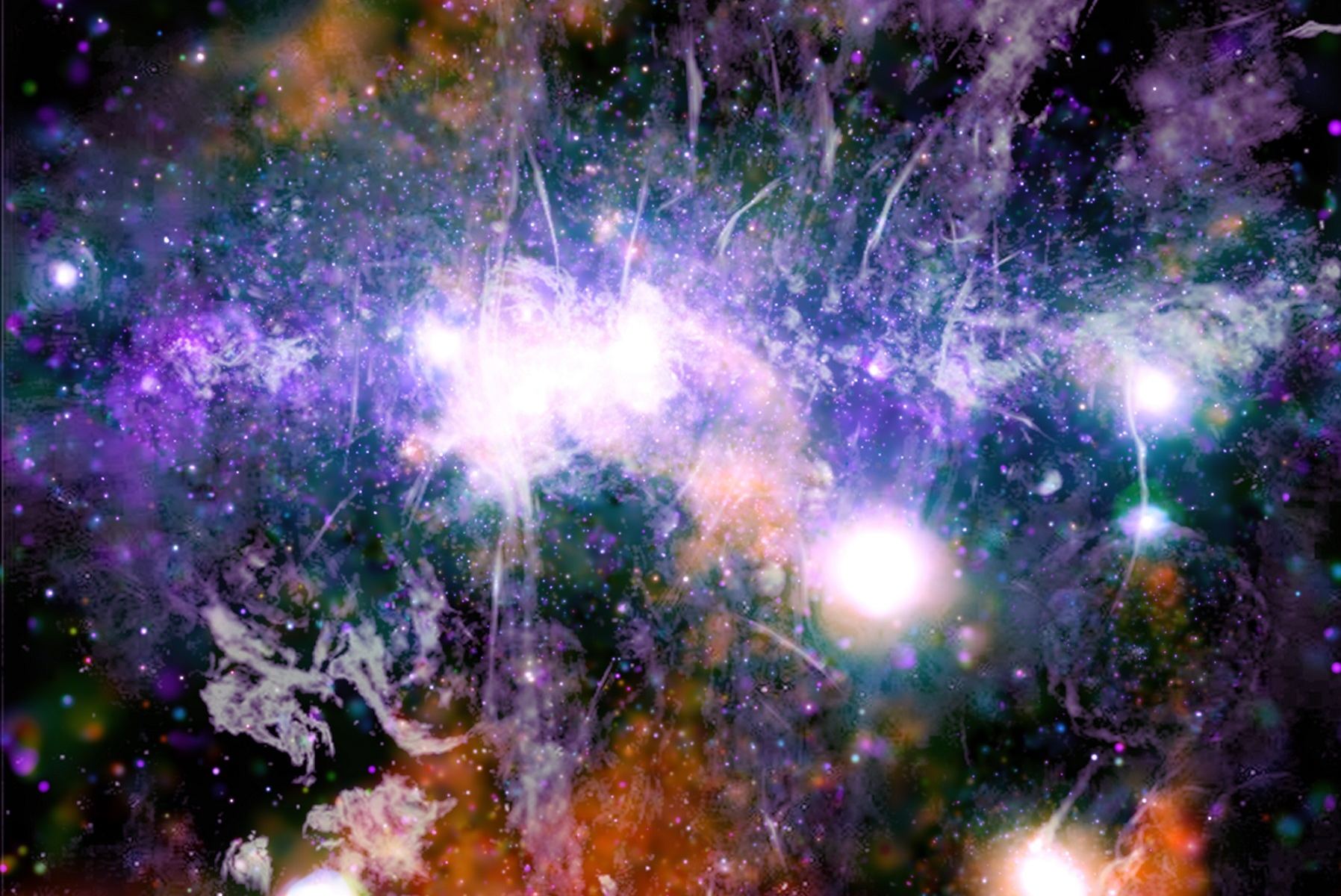
The core of the Milky Way Galaxy (aka. Galactic Center), the region around which the rest of the galaxy revolves, is a strange and mysterious place. It is here that the Supermassive Black Hole (SMBH) that powers the compact radio source known as Sagittarius A* is located. It is also the most compact region in the galaxy, with an estimated 10 million stars within 3.26 light-years of the Galactic Center.
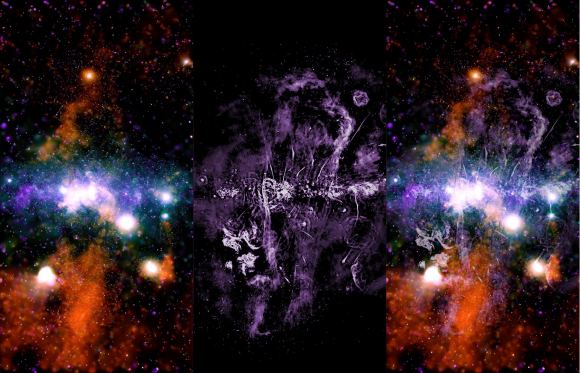
Image of the Galactic Center, visualized in x-ray (left), radio (center), and composite with annotations (right). Credit: X-ray: NASA/CXC/UMass/Q.D. Wang; Radio: NRF/SARAO/MeerKAT)
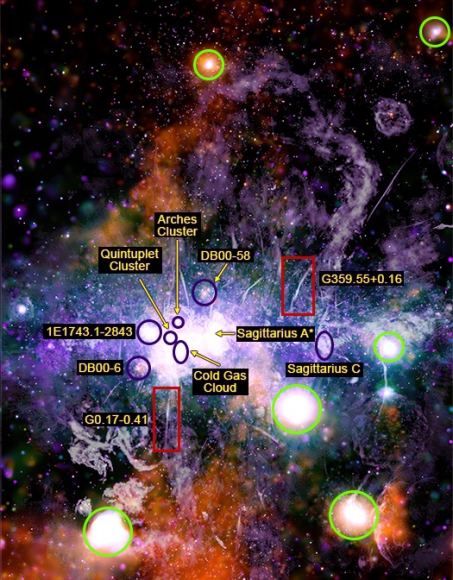
Mosaic image of Galactic Center with annotations. Credit: X-ray: NASA/CXC/UMass/Q.D. Wang; Radio: NRF/SARAO/MeerKAT)
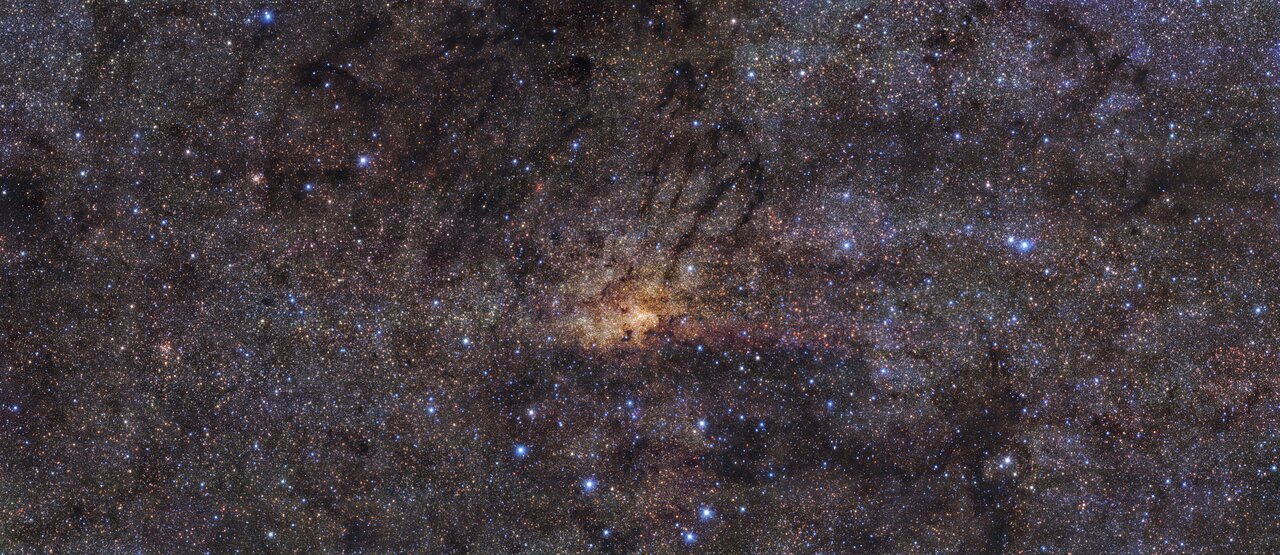
Thanks to the latest generation of sophisticated telescopes, astronomers are learning things a great deal about our Universe. The improved resolution and observational power of these instruments also allow astronomers to address previously unanswered questions. Many of these telescopes can be found in the Atacama Desert in Chile, where atmospheric interference is minimal and the cosmos can be seen with greater clarity.
ESO's Very Large Telescope (VLT) has observed the central part of the Milky Way with spectacular resolution and uncovered new details about the history of star birth in our galaxy. Watch this video summary to find out more about the stunning image captured with the HAWK-I instrument on the VLT and the discoveries made about star formation in the central region of our Galaxy. The video is available in 4K UHD. The ESOcast Light is a series of short videos bringing you the wonders of the Universe in bite-sized pieces. The ESOcast Light episodes will not be replacing the standard, longer ESOcasts, but complement them with current astronomy news and images in ESO press releases. More information and download options: ! Subscribe to ESOcast in iTunes Receive future episodes on YouTube by pressing the Subscribe button above or follow us on Vimeo: Watch more ESOcast episodes: Find out how to view and contribute subtitles for the ESOcast in multiple languages, or translate this video on YouTube: Credit: ESO Directed by: Herbert Zodet. Editing: Herbert Zodet. Web and technical support: Gurvan Bazin and Raquel Yumi Shida. Written by: Caroline Reid, Vanessa Emeka-Okafor and Bárbara Ferreira. Music: STAN DART — Malum. Footage and photos: ESO, Nogueras-Lara et al., C. Malin (christophmalin.com) and B. Tafreshi (twanight.org). Scientific consultants: Mariya Lyubenova. Caption author (Romanian) Răzvan Neagoe Caption author (Chinese (Taiwan)) Sheng Hung Caption author (Russian) Polina Anelikova Caption authors (Chinese (China)) Hd Ma cat calico Caption author (German) Joerg Schachner Caption author (Portuguese (Brazil)) Caroline M. Caption author (Arabic) To Arabic Caption authors (Italian) Giovanna Fabiola Valverde Fausto Mescolini Caption author (Vietnamese) Sang Mai Thanh
This video, which starts by showing a large-scale view of the Milky Way, zooms on the central region of our galaxy. This area was newly observed with the HAWK-I instrument on ESO’s Very Large Telescope in the Chilean Atacama Desert with an angular resolution of 0.2 arcseconds. This new stunning view of the central region of the Milky Way is visible towards the end of the video. More information and download options: Credit: ESO/Nogueras-Lara et al., N. Rinsinger Digitized Sky Survey 2. Music: Johan B. Monell
This video compares a visible light wide-field view (part of the Digitized Sky Survey 2) of the Milky Way’s central regions with a new near-infrared image taken with the HAWK-I instrument on ESO’s Very Large Telescope. The video starts by showing a visible light image of the Milky Way central regions, filled with vast numbers of stars. A moving slider then reveals that far more stars, hidden behind clouds of dust, are revealed when this region is observed in the near-infrared. More information and download options: Credit: ESO and Digitized Sky Survey 2 and ESO/Nogueras-Lara et al.. Acknowledgment: Davide De Martin and S. Guisard

A composite infrared image of the core of the Milky Way galaxy. The image is 600 light years across. Blue and green (25 and 36 microns) is from SOFIA’s FORCAST instrument, red (70 microns) is from the Herschel Space Observatory, and white (8 microns) is from the Spitzer space telescope. Image Credit:
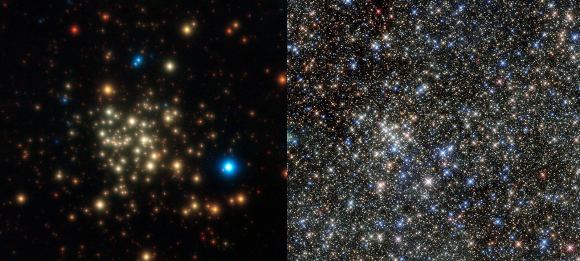
Arches Cluster (L) and the Quintuplet Cluster (R.) Though the Quintuplet Cluster was named for the first five stars observed there, we now know the cluster contains a huge number of massive young stars, just like the Arches Cluster. – Image Credit: (L) By ESO/P. Espinoza CC BY 3.0. (R) By ESA/Hubble, CC BY 4.0, From Wikipedia
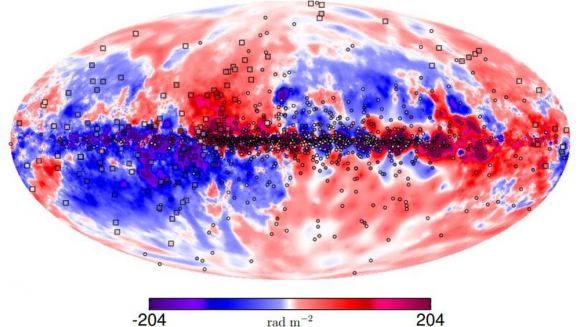
The Milky Way’s core is a region of complex magnetic fields that may influence star formation. This is a representation of how our Galaxy would look in the sky if we could see magnetic fields. The plane of the Galaxy runs horizontally through the middle, and the Galactic centre direction is the middle of the map. Red–pink colours show increasing Galactic magnetic field strengths where the direction is pointing towards the Earth. Blue–purple colours show increasing Galactic magnetic field strengths where the direction is pointing away from the Earth. Image Credit: Sobey et al, 2019.

An image of Sgr. A* (not from SOFIA.) Though quieter than other supermassive black holes, it still swallows material and emits high-energy radiation. In this case, it emitted an x-ray flare about 400 times brighter than its normal state. Image Credit: By NASA/CXC/Stanford/I. Zhuravleva et al.

Aim for the Center The Milky Way is 13 BILLION years old. Some of our Galaxy’s oldest stars were born near the beginning of the Universe itself. During all these eons of time, we know at least one technological civilization has been born – US! Feature Image: Composite image of the Milky Way’s core created by Hubble, Spitzer, and Chandra telescopes. Credit X-ray: NASA/CXC/UMass/D. Wang et al.; Optical: NASA/ESA/STScI/D.Wang et al.; IR: NASA/JPL-Caltech/SSC/S.Stolovy
Jason Wright 26 subscribers Video of Galactic Expansion for Research Note to be filled in here after publication.
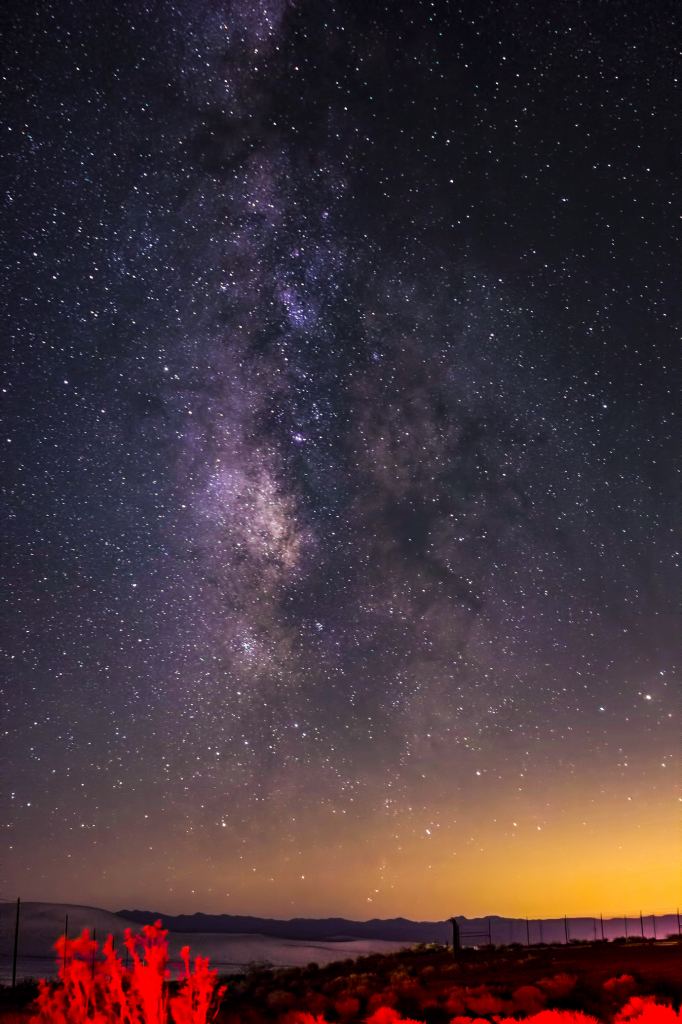
A view toward the Galaxy’s Center from Earth captured in the Mojave Desert. Credit: Photo by Author
Globular clusters within 100,000 light years of the center of the Milky Way. Note that the second grid (seen edge on) lying above the base grid is the actual plane where the disc and spiral arms of the Milky Way live. The image of the Milky Way seen on the lower, base grid is being projected down from the upper grid to the lower, base grid. Globular clusters farther than 25,000 light years of the galactic center are labeled. Data is from the on-line 2010 update of globular cluster data, originally published in Harris, W.E. 1996, Astron J, 112, 1487. Also see all globular clusters of the Milky Way at and globular clusters within 25,000 light years of the galactic center at
Today I'm joined by exoplanet researcher Dr. Jason Wright from Penn State University. In addition to the more traditional hunt for exoplanets, Jason is helping define the search for extraterrestrials using all the new techniques available to astronomers. Check out his blog at:
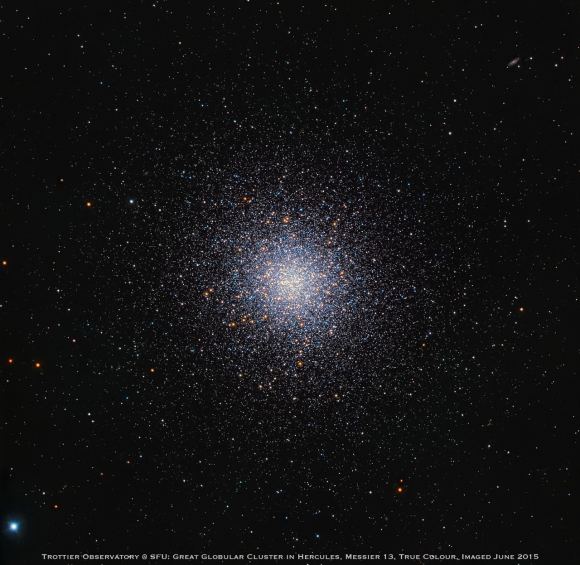
Globular Cluster M13 Credit: Howard Trottier, SFU Trottier Observatory

The Arecibo Message beamed to the M13 Globular Cluster. Creative Commons
UCLA news release